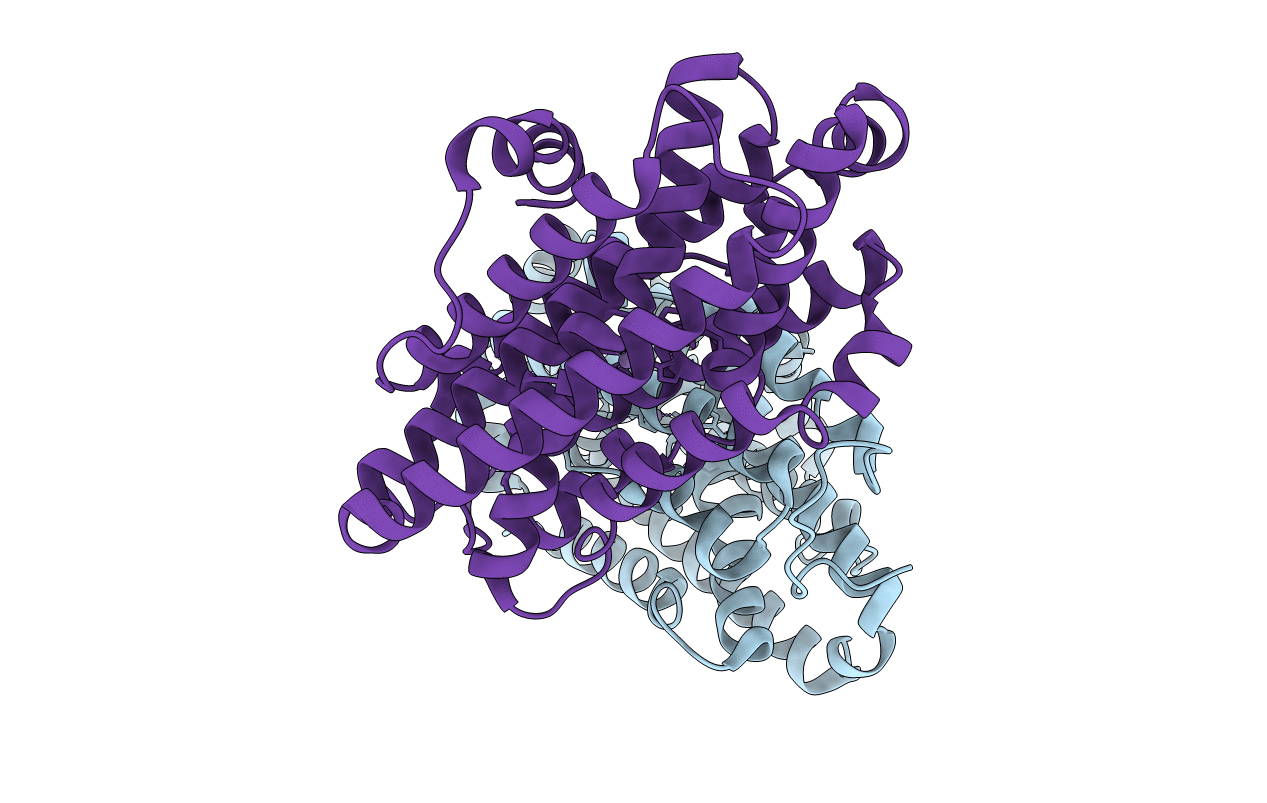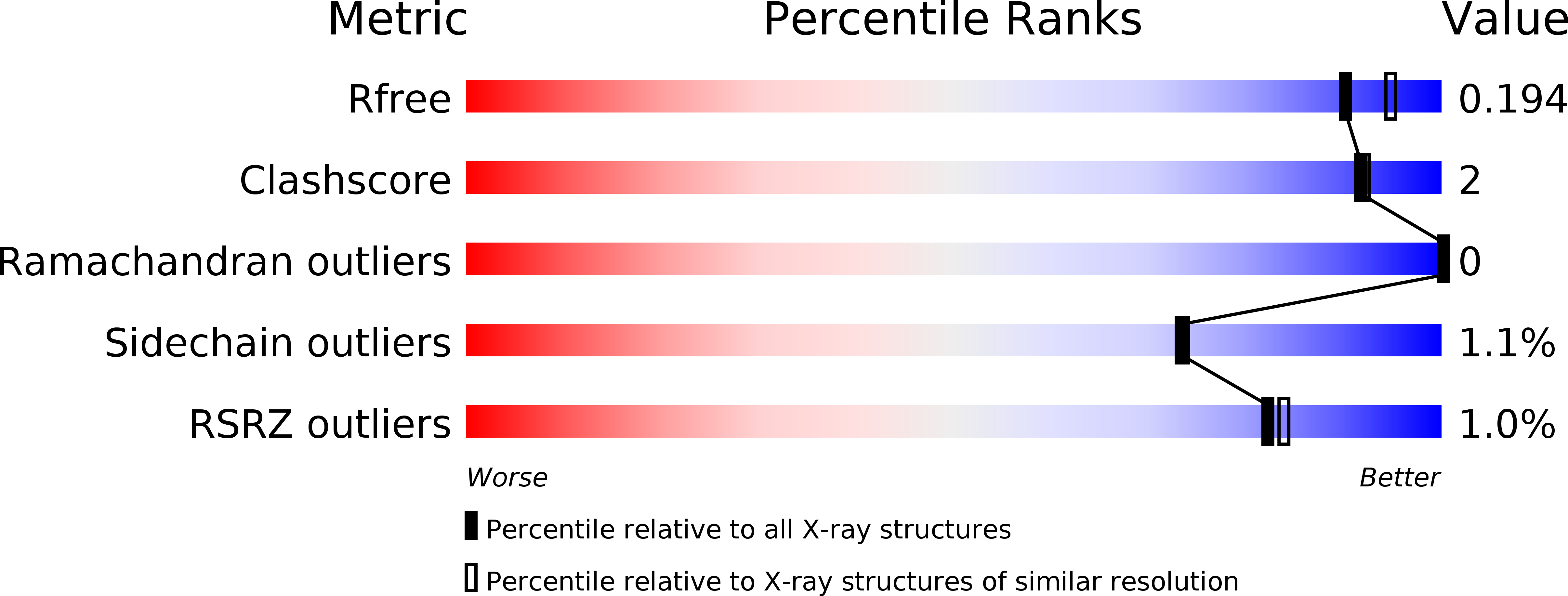
Deposition Date
2019-08-01
Release Date
2019-08-28
Last Version Date
2024-01-24
Entry Detail
PDB ID:
6SF5
Keywords:
Title:
Mn-containing form of the ribonucleotide reductase NrdB protein from Leeuwenhoekiella blandensis
Biological Source:
Source Organism:
Leeuwenhoekiella blandensis (Taxon ID: 360293)
Host Organism:
Method Details:
Experimental Method:
Resolution:
1.90 Å
R-Value Free:
0.19
R-Value Work:
0.17
R-Value Observed:
0.17
Space Group:
P 21 21 21


